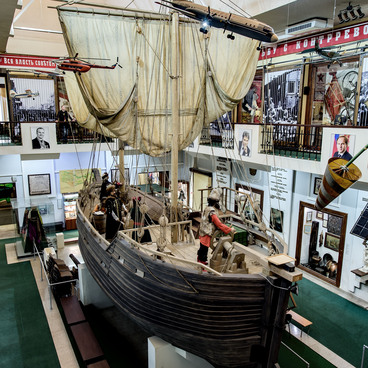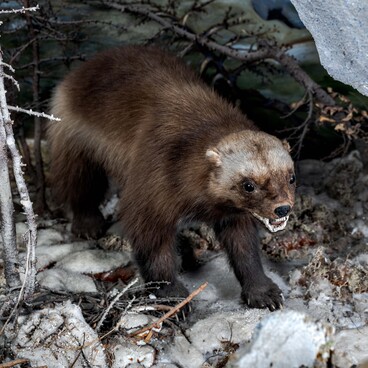Stegosaurus was a herbivorous saurian that lived in the late Jurassic period, about 150 million years ago. It was large and clumsy, slow-moving and not adapted to running. The saurian was nine meters long, four meters high and weighed nine tons. Its back and tail were covered by bone plates and spines, making it one of the most recognizable dinosaurs.
Stegosaurus bones were first discovered in the United States in 1877. Professor of paleontology Othniel Charles Marsh, who described more than 80 species of dinosaurs, including Diplodocus, Triceratops, Allosaurus and Brontosaurus, suggested that Stegosaurus moved on two legs because its forelimbs were much shorter than its hind limbs. He later proved that the lizard walked on four legs, but could stand on its hind ones to reach leaves on trees.
There were 17 bony plates on the neck, back and tail of Stegosaurus, that were not attached to the skeleton. There are many different arguments and versions about their function. The plates were embedded with blood vessels and could turn bright red, attracting a mate or scaring off predators. Four powerful, up to one meter long, spikes on the tail, which could inflict fatal wounds on the enemy, also served as a defense weapon.
Stegosaurus was a herbivorous dinosaur, but its small teeth were not well adapted for chewing food. Perhaps these lizards, like modern birds and crocodiles, swallowed stones that grinded food in their stomachs. Stegosaurus could also eat animal food, mostly carrion.
Stegosaurus were found on all continents except Australia and Antarctica. Most of these saurians have been found on the territory of North America and China. The first Stegosaurus skeleton in Russia was discovered in the Krasnoyarsk Krai, in the Sharypovsky district, on the territory of the Berezovsky coal mine — before that it was believed that they had never lived in Siberia. The local historian Sergey Krasnolutsky spent eight years carefully collecting and systematizing the remains — large and small bone fragments.
This Stegosaurus skeleton belonged to a young
specimen, with a body length of about four meters and a height of one and a
half meters. The remains are about 160 million years old, 10 million years
older than all known finds of this species in the world.


